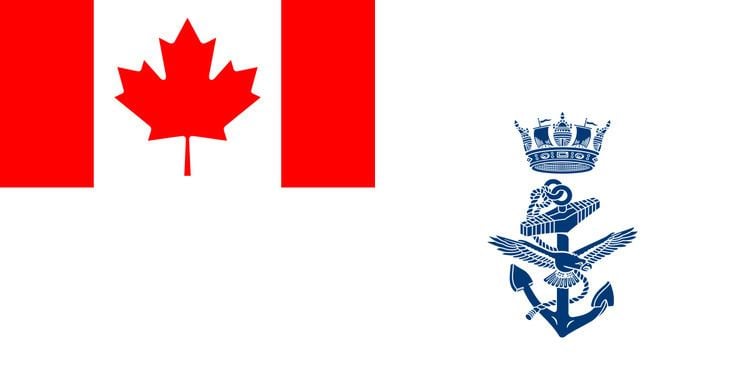 | ||
The Royal Canadian Navy (RCN) is tasked to provide maritime security along the Pacific, Atlantic and Arctic coasts of Canada, exercise Canada's sovereignty over the Arctic archipelago, and support Canada's multi-national and bilateral interests overseas. The RCN fleet comprises the Pacific Fleet at Canadian Forces Base (CFB) Esquimalt, and the Atlantic Fleet at CFB Halifax. CFB Esquimalt is located on Vancouver Island, in British Columbia, and is home to 15 vessels and 6,000 staff, the headquarters for Maritime Forces Pacific, Her Majesty's Canadian (HMC) Dockyard Esquimalt, Fleet Maintenance Facility – Cape Breton (FMF-CB), Fire Fighting and Damage Control School, the Naval Officer Training Centre (NOTC Venture), and extensive housing. CFB Halifax is home port for the 18 vessels of the Canadian Atlantic Fleet and situated in Halifax, Nova Scotia. CFB Halifax employs 7,000 civilians and military staff, and hosts the Canadian Atlantic Fleet headquarters, HMC Dockyard Halifax, FMF Cape Scott, extensive maritime research facilities, an ammunition depot, and the four maritime squadrons of the Royal Canadian Air Force that serve aboard the fleet. The Canadian Armed Forces are currently constructing a new naval facility at Nanisivik, Baffin Island, to provide a summer port for RCN patrols in the Canadian arctic.
Contents
- Frigates
- Submarines
- Maritime coastal defence vessels
- Patrol craft training vessels
- Development and procurement
- References
With the loss of command-and-control and resupply capabilities in 2015, the RCN is classified as a Rank 5 navy (offshore regional coastal defence) on the Todd-Lindberg classification system, dropping from Rank 3 (multiregional power projection). In 2011, the government restored the traditional name of the Royal Canadian Navy, removed at the unification of the Canadian Armed Forces in 1968. Commissioned vessels are designated as 'Her Majesty's Canadian Ship' (HMCS), minor ships as 'Patrol Craft Training' (PCT) and auxiliaries as 'Canadian Forces Auxiliary Vessel' (CFAV).
Frigates
The Halifax-class frigates are multi-role vessels with anti-submarine, anti-aircraft and anti-ship capability. In response to recent global security interests, the role of the class has shifted from open ocean to littoral engagement. Innovations in operational tactics have allowed the vessels of this class to adapt to new asymmetric surface threats. To ensure effective long-term capacity in this new threat environment the ships are undergoing a refit, including passive and active weapons, radars, and new combat architecture to meet the modern requirements. To date, seven of the 12 ships have been refitted. Each holds a complement of 225 officers and crew. All ships of the class are named after major Canadian cities.
Submarines
The Victoria class are diesel-electric fleet submarines designed in the late 1970s to supplement the Royal Navy's nuclear submarine force. They were decommissioned at the end of the Cold War. In 1998, Canada purchased the submarines to replace the aging Oberon-class submarines. Refit for Canadian service included the removal of Sub-Harpoon missile firing and mine-laying capabilities, installation of torpedo launch systems and upgrades to weapons and fire control systems. Each vessel holds 53 crew.
Maritime coastal defence vessels
The Kingston-class coastal defence vessel are multi-role vessels built and launched from the mid- to late-1990s and are crewed by a combination of Naval Reserve and Regular-Force personnel. Each vessel displaces 970 t and runs with a complement of between 31 and 47 officers and crew. Their main missions are counter narcotics, coastal surveillance, sovereignty patrol, route survey, and training. The ships' capabilities include a mechanical minesweeping system, a route survey system, and a bottom object inspection vehicle.
Patrol craft training vessels
Orca-class ships are primarily used for one-to-six-week long 'at sea' naval officer training. Regular force Boatswains, Engineers and Naval communicators serve in these ships to train junior officers and non-commissioned sailors. They also patrol coastal waters for pollution infractions and fishing violations, and are frequently tasked for search and rescue operations. They operate year-round in the coastal waters of British Columbia.
Development and procurement
The RCN is undergoing a complex program of capacity expansion, ship life extension, modernization and fleet procurement. The Nanisivik Naval Facility currently under construction on Baffin Island in the arctic will provide shore services for fleet operations in the arctic during the four month summer season. The National Shipbuilding Procurement Strategy will invest more than $30 billion into the development of Arctic capable patrol vessels, frigate-class surface warships, and long-range auxiliary supply vessels. Construction has begun on the 5–6 Harry DeWolf-class vessels under the Arctic Patrol Ship Project. The commercial containership MS Asterix is currently being converted into a fleet supply vessel, to meet operational requirements until the 2 new Queenston-class auxiliary vessels are completed. While up to 15 warships of the Single Class Surface Combatant Project remain in the planning stages, the RCN is upgrading all current frigates with advanced systems and life extension maintenance to maximize operational capability into the 2030s. In addition to the fleet component, the Canadian Armed Forces have begun replacing aging CH-124 Sea King helicopters serving in the RCN, with the CH-148 Cyclone. The first six Cyclones were delivered June 2015 followed by a further two "Block 1.1" Cyclones in November/December 2015.
